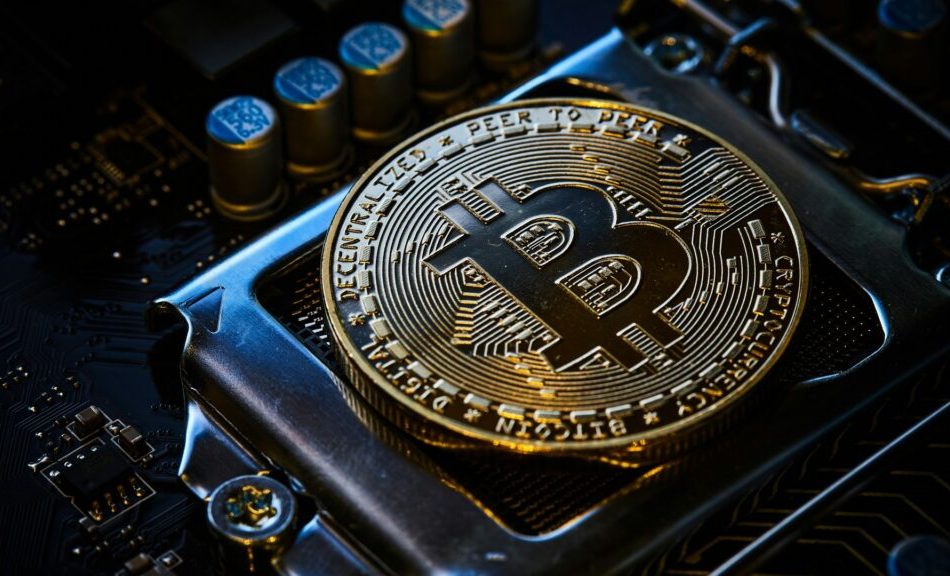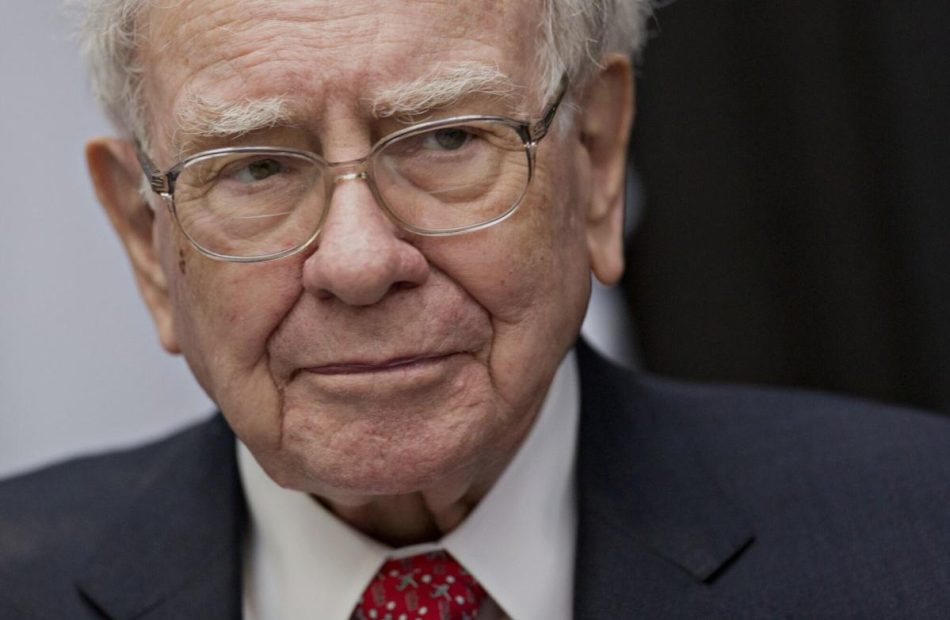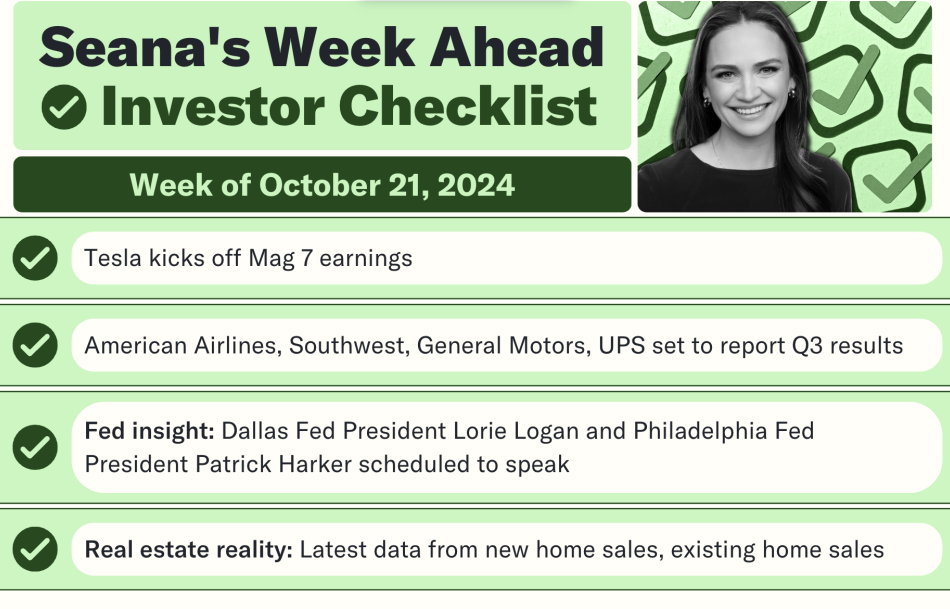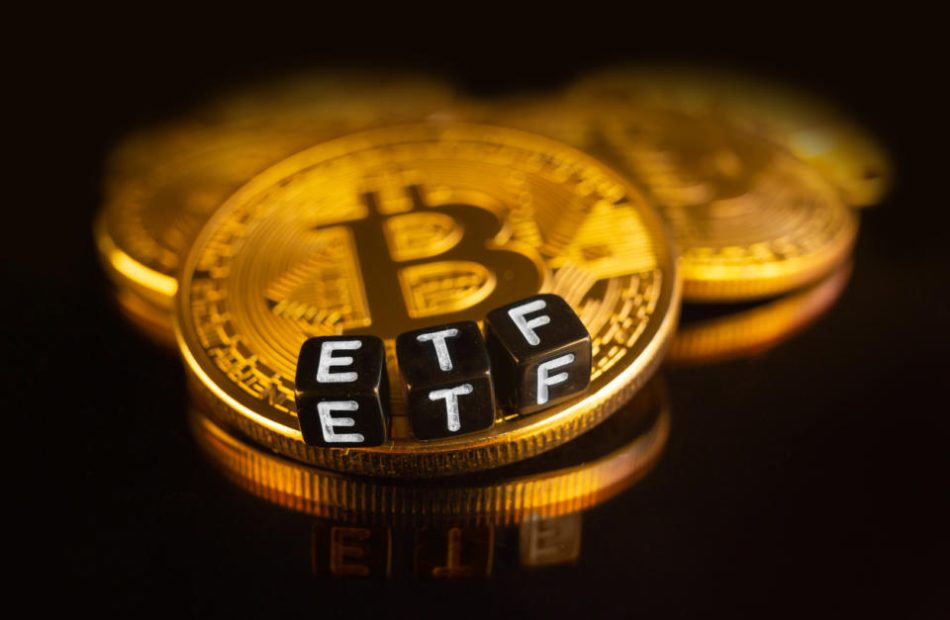Bitcoin Landfill Lawsuit, Coinbase CEO's Musk Admiration, Anthony Scaramucci's BTC Investment And More: This Week In Crypto
This past weekend was a whirlwind of activity in the cryptocurrency world. From a man suing a city council over lost Bitcoins to the Coinbase CEO expressing admiration for Elon Musk’s productivity, the stories were as diverse as they were intriguing. Here’s a quick recap of the top stories that made headlines.
Bitcoin Landfill Lawsuit: James Howells, a software engineer from Wales, has filed a lawsuit against Newport City Council. Howells is seeking damages of approximately £495.31 million ($647 million) after the council repeatedly denied his requests to excavate a landfill site where he accidentally discarded a hard drive containing around 8,000 units of Bitcoin. The lawsuit is a strategy to persuade the council to allow the excavation, not a reflection of the actual situation. Read the full article here.
Armstrong’s Musk Admiration: Brian Armstrong, CEO of Coinbase, expressed his admiration for Elon Musk’s efficiency and productivity. Armstrong suggested that a rigorous study should be conducted to understand how Musk achieves so much. He believes that understanding Musk’s productivity could be an important question for civilizational progress. Read the full article here.
Scaramucci’s Bitcoin Investment: Anthony Scaramucci, CEO of SkyBridge Capital, revealed during a podcast that he has significant investments in Bitcoin. Scaramucci shared anecdotes about his conversation with MicroStrategy CEO Michael Saylor, who had a unique perspective on Scaramucci’s recommendation of a 1-3% allocation to Bitcoin. Read the full article here.
Crypto Market Predictions: Cryptocurrency markets were trading higher as of Wednesday, taking 96% of Bitcoin holders into profit. Trader Michaёl van de Poppe now predicts all-time high prices in the ‘next 3-4 weeks’. Read the full article here.
Warren vs. Deaton: Sen. Elizabeth Warren and her Republican challenger John Deaton exchanged heated words over cryptocurrencies during their first debate. Warren accused Deaton of receiving maximum funding from the big cryptocurrency lobby to win the Massachusetts seat. Read the full article here.
Photo courtesy: Unsplash
This story was generated using Benzinga Neuro and edited by Anan Ashraf.
Market News and Data brought to you by Benzinga APIs
© 2024 Benzinga.com. Benzinga does not provide investment advice. All rights reserved.
Berkshire Hathaway Lifts Stake in Sirius XM After Malone Deal
(Bloomberg) — Warren Buffett is amplifying his bet on Sirius XM Holdings Inc., as Berkshire Hathaway Inc. keeps adding more shares of the radio broadcasting firm to its portfolio.
Most Read from Bloomberg
The conglomerate has acquired $42 million worth of shares in the three days through Friday, regulatory filings show.
Berkshire Hathaway now has a stake of about 32.5% in Sirius XM’s publicly traded stock, having become the top holder last month. That change came as billionaire John Malone’s Liberty Media split off its 83% stake and combined it with its separate tracking shares in the broadcaster.
Bershire added more of the stock to its holdings last week. The move provided some support for Sirius XM’s shares, which are down 50% this year amid expectations of lower sales.
Most Read from Bloomberg Businessweek
©2024 Bloomberg L.P.
Nvidia to win the race to $4 trillion market cap, experts say
Buy the dip.
That was the mindset around chip stocks this week as investors scooped up beaten-down shares, sending Nvidia to a record high. A strong outlook for Taiwan Semiconductor (TSM) was enough to revive Wall Street’s enthusiasm for AI as growing confidence in the AI boom overshadowed chip supplier ASML’s sluggish forecast and reports of export caps of advanced AI chips to some Middle Eastern countries.
Nvidia closed the week above $138 per share, bringing its market value to $3.39 trillion. It’s now the world’s second-largest company behind Apple. But that might not be for long. Experts I spoke with this past week say there’s growing confidence the chip giant will be the first Big Tech firm to reach a $4 trillion valuation.
“There’s no question about it,” Ram Ahluwalia, Lumida Wealth Management CEO, told me on Yahoo Finance’s Catalysts. “The demand for GPU chips is strong, and you’re seeing early adopters starting to get some ROI.”
Nvidia CEO Jensen Huang fueled the stock’s rally earlier this month after describing demand for the new Blackwell chips as “insane.”
Even amid the stock’s dramatic outperformance, T. Rowe Price portfolio manager Tony Wang told me investors still “continuously underestimate” Nvidia’s growth potential. He sees “exceptional” demand for AI making it “definitely possible” that the chip giant crosses that $4 trillion threshold first.
In the coming weeks, earnings from fellow Magnificent Seven companies will give investors better insight into Nvidia’s market dominance. Meta (META), Amazon (AMZN), Alphabet (GOOG, GOOGL), and Microsoft (MSFT), which account for more than 40% of the chipmaker’s revenue, have all pledged to continue investing in AI.
Last quarter, spending by Meta, Alphabet, and Microsoft totaled more than $40 billion, while Amazon said spending in the second half of the year will likely surpass the $30 billion spent during the first half.
BofA analyst Vivek Arya, who views Nvidia as a “generational opportunity,” cites capital expenditure commentary from top hyperscalers among the reasons that he sees Nvidia “strengthening its position.”
Arya lifted his price target on the chipmaker to $190 this week, implying a rally of nearly 40% from Friday’s closing price.
Arya and his team also cited Taiwan Semiconductor’s robust demand outlook as a positive. TSMC — a top supplier for Nvidia and other giants, including Apple — triggered a sector-wide rally after posting a more than 50% jump in net income for the third quarter and forecasting full-year revenue growth of nearly 30%.
Safe to say, Big Tech’s third quarter numbers will be a crucial test for Nvidia and key to the stock’s momentum in the short term. Any disappointment in AI spending plans could lead to volatility for Nvidia and the broader chips market.
But if that happens, the sell-off may not last long. Niles Investment Management founder Dan Niles recently told me on Yahoo Finance’s Opening Bid podcast he remains bullish on Nvidia’s long-term prospects.
“You’ve got several more years of AI investment before you hit saturation or a more maturing AI landscape,” Niles said. “You’ll see Nvidia’s revenues double over the next several years, and I think you’ll see the stock double over the next several years.”
Nvidia shares have rallied 21% so far this month, bringing its gains to 179% year to date.
Seana Smith is an anchor at Yahoo Finance. Follow Smith on Twitter @SeanaNSmith. Tips on deals, mergers, activist situations, or anything else? Email seanasmith@yahooinc.com.
Click here for the latest technology news that will impact the stock market
Read the latest financial and business news from Yahoo Finance
The housing market is picking up in some of the most expensive regions of the US
The housing market is showing signs of life.
Listing activity and homes going under contract ticked up last month nationwide, the latest sign that some of the paralysis brought on by the rapid jump in mortgage rates in recent years is easing.
But there’s a limit to how far the housing market can rebound as homeowners with ultra-low mortgage rates stay put instead of listing their homes and accepting today’s rates of 6% or more, a phenomenon known as the rate lock-in effect.
“Generally, new listings and sales moved closer to pre-pandemic norms in September,” said Kara Ng, a housing economist at Zillow. “That’s still a long way to go in terms of normalizing supply.”
In September, the biggest gains came in pricy locales like Seattle, Los Angeles, and San Jose, Calif.
Those regions have higher proportions of buyers who finance their purchases and jumbo mortgages that hand homebuyers bigger monthly cost savings when mortgage rates fall. In some markets, listing prices have even dropped slightly.
About 950,000 homes were on the market nationwide in September. That number has been steadily rising this year, though it’s still about 22% below 2019 levels.
New listings rose by 25% or more last month compared to a year earlier in the Seattle, Silicon Valley, Denver, and Washington, D.C., areas, according to Realtor.com. Median listing prices in all of those markets top $599,000.
In expensive parts of the country, any mortgage rate savings can help spark buyer interest, said Tim Nguyen, a real estate agent in Santa Clara, Calif., where the median home lists for more than $1.4 million. Average interest rates this year dropped more than a percentage point from as high as 7.22% in May to closer to 6% last month.
“That always drives the market,” Nguyen said. “If you look at a $1 million home, for every percentage point drop it’s a little over $500 of savings every month. That’s significant when you need money to buy groceries.”
Read more: Is this a good time to buy a house?
Pending sales, a measure of homes under contract, were up by double digits in Portland, Ore., Seattle, and several California cities in recent weeks, according to Redfin. But the signs of improvement come off of a very low base — a year ago, homebuying was muted because mortgage rates were close to 8% and measures of homes under contract have remained near record-low levels for years.
Nationwide, Redfin calculated that pending sales rose 3.2% year over year for the four weeks through Oct. 13. It was the biggest jump in more than three years.
Troy Khuu, a San Jose-based agent, said the most desirable homes in his market — ones that are updated, located in strong school districts, and close to tech companies — are still selling above their asking price, sometimes in a matter of days. But buyers aren’t rushing to buy homes that don’t meet all of their specifications, he said.
“It’s no longer the buying frenzy we saw a few years ago,” Khuu said. “It depends on the listing. It depends on the price.”
Homebuying is a heavily seasonal activity. Zillow deemed September as something of a “last call” for the market before sales slow down for the winter. And in recent weeks, mortgage rates have started rising again, and mortgage applications for home purchases have slowed.
“We’re making strides in the right direction, but they’re pretty small steps,” said Danielle Hale, chief economist at Realtor.com. “I think it’s still going to be a while before we stop talking about the mortgage rate lock-in effect.”
Read more: Should you lock in a mortgage rate — and if so, when?
Claire Boston is a senior reporter for Yahoo Finance covering housing, mortgages, and home insurance.
Click here for more information and tools to help you handle your finances
If I Could Only Buy 1 Stock Right Now, This Stock-Split Stock Would Be It.
The past few years have marked a renaissance in the popularity of stock splits. The practice was commonplace during the 1990s but had fallen out of favor, only to be discovered by a new generation of investors over the past few years. Companies will generally make the decision to split their shares after years of strong growth and solid financial results that fuel a surging stock price.
This year provides a few excellent examples:
-
Nvidia (NASDAQ: NVDA) executed a 10-for-1 split payable June 7, 2024.
-
Chipotle announced a 50-for-1 split payable June 25, 2024.
-
Broadcom delivered a 10-for-1 split payable July 12, 2024.
-
Super Micro Computer executed a 10-for-1 split payable Sept. 30, 2024.
The common thread that weaves these disparate companies together is years, if not decades, of market-beating returns.
If I could buy only one stock right now, Nvidia tops my list. Here’s why.
An uncanny ability
Most investors (myself included) would point to the massive opportunity represented by artificial intelligence (AI) as the primary reason to own Nvidia stock. That’s certainly one of the most important factors (more on that in a bit). However, one of the more intriguing aspects of the company is CEO Jensen Huang’s uncanny ability to anticipate the next big thing and design solutions to meet that need.
Nvidia pioneered the graphics processing unit (GPU) that revolutionized gaming in 1999, but the company was already looking ahead and by 2006, had adapted the technology to accelerate supercomputing. The humble GPU is now the gold standard for cloud computing and data centers everywhere, with a dominant 98% of the data-center GPU market last year, according to data provided by TechInsights.
There’s more. Investors might be surprised to learn that Huang positioned Nvidia to tackle the oncoming AI revolution all the way back in 2013, betting the company’s future on technology that had not yet come into its own. When AI went viral early last year, Nvidia was able to reap the seeds Huang had sown a decade earlier.
The results paint a picture
“A picture paints a thousand words,” or so the old saying goes. In this case, however, it’s Nvidia’s financial results that tell the tale. For the fiscal 2025 second quarter (ended July 28), Nvidia generated record revenue of $30 billion, which surged 122% year over year and 15% sequentially. The results were driven by record data-center revenue of $26.3 billion, which jumped 154%. Profits also soared, as evidenced by diluted earnings per share (EPS) of $0.67, an increase of 168%.
Management expects Nvidia’s winning streak to continue, albeit at a slower pace. Nvidia’s forecast is guiding for revenue of $32.5 billion, which would represent year-over-year growth of 79%, with a corresponding bump in profitability. While that’s slower than the triple-digit growth the company had delivered for five consecutive quarters, it’s a remarkable accomplishment nonetheless.
Why now?
I can guess what you’re thinking. Sure, Nvidia has been a rocket ship since early last year, but the low-hanging fruit has already been picked. After all, the stock has surged 837% since the start of last year (as of market close on Thursday ) and hit a new record high just this week.
Here’s the thing. We’re still in the early stages of AI, and new-use cases are still being developed. Some will point to the early fumbles as proof that the technology isn’t yet ready for prime time. While that’s partially true, it won’t be long before the bugs are worked out and AI comes into its own. With that in mind, I’d argue that the best AI-related gains are yet to come.
Estimates regarding the size of the generative AI market abound, yet there’s no consensus. The market is estimated to be worth $1.3 trillion by 2032, according to Bloomberg Intelligence. A more bullish estimate comes courtesy of Ark Invest’s Big Ideas 2024 report, where Cathie Wood posits that the AI software market alone could generate incremental spending of $13 trillion by the end of the decade. Her bull case is even more eye-catching at $37 trillion. The truth is that we don’t know how big generative AI will be, yet estimates continue to ratchet higher.
Furthermore, bears would say the stock is exorbitantly expensive and “priced to perfection,” and they’d have a point. Nvidia stock is currently selling for 64 times earnings and 35 times sales, which in most cases would be outrageous. And if the situation were different, I might be tempted to agree.
However, analysts’ consensus estimates, which have proven to be conservative over the past year, expect Nvidia to generate EPS of $4.05 for its fiscal 2026, which kicks off in January. Based on the stock’s closing price on Thursday, that works out to about 33 times forward earnings, which isn’t much more expensive than the multiple of 30 for the S&P 500. Wall Street also expects Nvidia to grow its profits by 52% annually over the coming five years, which illustrates why the stock is worthy of a premium.
Taken in its entirety, this lays out a compelling case that Nvidia’s growth is far from over, the addressable market for AI continues to grow, and the stock isn’t as expensive as it might seem.
There’s one more thing: I’m counting on Huang to predict the next big thing and pivot Nvidia’s technology to provide solutions — and profit handsomely.
It doesn’t get much better than that, which is why if I could only buy one stock right now, it would be Nvidia.
Don’t miss this second chance at a potentially lucrative opportunity
Ever feel like you missed the boat in buying the most successful stocks? Then you’ll want to hear this.
On rare occasions, our expert team of analysts issues a “Double Down” stock recommendation for companies that they think are about to pop. If you’re worried you’ve already missed your chance to invest, now is the best time to buy before it’s too late. And the numbers speak for themselves:
-
Amazon: if you invested $1,000 when we doubled down in 2010, you’d have $21,285!*
-
Apple: if you invested $1,000 when we doubled down in 2008, you’d have $44,456!*
-
Netflix: if you invested $1,000 when we doubled down in 2004, you’d have $411,959!*
Right now, we’re issuing “Double Down” alerts for three incredible companies, and there may not be another chance like this anytime soon.
*Stock Advisor returns as of October 14, 2024
Danny Vena has positions in Chipotle Mexican Grill, Nvidia, and Super Micro Computer. The Motley Fool has positions in and recommends Chipotle Mexican Grill and Nvidia. The Motley Fool recommends Broadcom and recommends the following options: short December 2024 $54 puts on Chipotle Mexican Grill. The Motley Fool has a disclosure policy.
If I Could Only Buy 1 Stock Right Now, This Stock-Split Stock Would Be It. was originally published by The Motley Fool
Betterment Tells Clients: Shift Crypto Holdings to ETFs
Robo-advisor Betterment has told investors using its direct cryptocurrency investing service that they have a month to convert those investments into ETFs.
The decision to shutter the two-year-old crypto investing platform, which New York-based Betterment announced to platform users via email on Oct. 16, is seen as a sign of things to come that will likely benefit the crypto ETF space.
“Now that the ETFs are here, Betterment can jettison all that and replace the allocation with a far superior offering,” said Ric Edelman, founder of the Digital Assets Council of Financial Professionals and a member of the etf.com advisory board.
Citing the contrast between Bitcoin ETFs with fees as low as 12 basis points and the 1% investors are charged by the Betterment platform that was linked to Gemini, Edelman said, “It’s a win-win.”
“Clients save money, gain improved convenience and better abilities for portfolio rebalancing, and the company gets to eliminate a cumbersome and expensive internal operations function,” he said. “And those crypto bros who want to keep their positions can do so by working directly with Gemini.”
Betterment Nods Toward Crypto ETFs
Betterment declined to comment for this story, but a spokesperson did confirm the accuracy of a report by RiaBiz.com.
The story didn’t say that Betterment had recommended a particular crypto fund for clients.
Tyrone Ross, chief executive of 401 Financial and Turnqey Labs, said Betterment’s decision to offer access to crypto currency models was innovative and important two years ago, but since the Securities and Exchange Commission this year approved Bitcoin and Ethereum ETFs, that picture has changed.
“I’m a fan of holding the underlying directly, but for most investors who are not crypto savvy, the best choice is investing through an ETF,” said Ross, who added that he would never advise a sophisticated crypto investor to use a crypto ETF.
“I abhor everything about the crypto ETFs,” he said. “There’s the fees, the fact there is no direct ownership, it doesn’t solve a lot of the issue advisors still have in the crypto space, and it’s just a money grab by ETF issuers.”
That said, Ross expects to see more platforms go the Betterment route of offering access to crypto ETF model portfolios, which he sees as a boon for those ETFs.
“I think you’ll see a lot of platforms that were using companies like Gemini start to move over to ETFs,” he said.
Edelman sees a similar evolution.
“Betterment is not just helping its clients and itself, it’s showing all advisory firms how easy this is to do,” he added. “There’s truly no reason anymore for RIAs not to offer bitcoin and Ethereum to their clients.”
Meanwhile, Chris King, founder of the crypto separate account platform Eaglebrook, sees a future where crypto ETFs and direct ownership in crypto become strategies that advisors turn to when customizing client portfolios.
“As crypto continues to evolve as standard portfolio allocations, we expect advisors to utilize crypto ETFs and crypto SMAs based on which best suits their clients’ particular needs,” he said.
Billionaires Are Buying a BlackRock Index Fund That Could Soar Up to 73,000%, According to Wall Street Experts
In the first half of 2024, the billionaires listed below started positions in BlackRock‘s exchange-traded fund (ETF) that tracks the spot price of Bitcoin (CRYPTO: BTC). The fund is called the iShares Bitcoin Trust (NASDAQ: IBIT). Their positions remain small, but their ownership is still noteworthy because they manage the three best-performing hedge funds in history as measured by net gains, according to LCH Investments.
-
Ken Griffin of Citadel Advisors bought a net total of 63,186 shares of the iShares Bitcoin Trust. The position represents less than one-tenth of a percent of his $494 billion portfolio.
-
David Shaw of D.E. Shaw & Company bought a net total of 2.6 million shares of the iShares Bitcoin Trust. The position represents one-tenth of a percent of his $107 billion portfolio.
-
Israel Englander of Millennium Management bought a net total of 10.8 million shares of the iShares Bitcoin Trust. The position represents two-tenths of a percent of his $216 billion portfolio.
Bitcoin more than doubled in value over the last year, and some Wall Street experts are predicting monster gains in the coming decades. Indeed, one forecast leaves room for Bitcoin’s price to appreciate 73,000% by 2045, which implies equivalent gains in the iShares Bitcoin Trust. Here’s what investors should know.
Wall Street bulls think Bitcoin could soar as much as 73,000%
Bernstein analyst Gautam Chhugani estimates Bitcoin could reach $500,000 by 2029 and $1 million by 2033 as the cryptocurrency is made increasingly mainstream by spot Bitcoin ETFs. The latter figure in that forecast implies about 1,390% upside from its current price of $67,000.
Cathie Wood at Ark Invest estimates Bitcoin could hit $3.8 million by 2030, provided that institutional investors “allocate a little more than 5% of their portfolios to Bitcoin,” which she sees as a likely outcome. That forecast implies 5,570% upside from its current price.
MicroStrategy Executive Chairman Michael Saylor estimates Bitcoin will reach $13 million by 2045, though he sees a bear-case scenario where it stops at $3 million and a bull-case scenario where it surges to $49 million. Saylor’s base case implies 19,300% upside from the current price, but the bull case implies 73,000% upside.
Those Wall Street bulls have at least one thing in common. They believe spot Bitcoin ETFs will unlock demand among institutional investors. Importantly, institutions have about $120 trillion in assets under management. Even a small percentage of those assets allocated to Bitcoin could cause its price to increase substantially.
The investment thesis for Bitcoin depends on adoption by institutions
The investment thesis for Bitcoin is simple: With supply limited to 21 million coins, its price is primarily determined by demand. Spot Bitcoin ETFs could boost demand among retail and institutional investors by eliminating traditional sources of friction associated with cryptocurrency exchanges.
To elaborate, spot Bitcoin ETFs let investors add Bitcoin to existing brokerage accounts, such that they no longer need distinct cryptocurrency exchange accounts. Also, spot Bitcoin ETFs tend to be cheaper than transacting on cryptocurrency exchanges. For instance, the iShares Bitcoin Trust has an expense ratio of 0.25%, but Coinbase Global charges 0.6% per transaction for orders under $10,000.
In January, Yassine Elmandjra at Ark Invest enumerated the benefits of spot Bitcoin ETFs following their approval in January 2024 by the SEC.
First, a spot ETF provides a direct way for institutional and retail investors to gain exposure to Bitcoin without dealing with the complexities of self-custody or other onboarding requirements. Second, spot ETFs legitimize Bitcoin as an institutional asset, which should catalyze Bitcoin’s acceptance and integration into traditional financial systems. Finally, spot ETFs should increase Bitcoin’s liquidity and trading volumes significantly.
Wood believes institutional investors will allocate about $6 trillion to Bitcoin by 2030, while Chhugani at Bernstein estimates a slightly more conservative $3 trillion by 2033. For context, spot Bitcoin ETFs have accumulated $63 billion in assets, which is about 1% of Wood’s prediction and 2% of Chhugani’s prediction.
However, spot Bitcoin ETFs have undoubtedly peaked institutional interest. 13F forms indicate that about 600 institutional investors had stakes in the iShares Bitcoin Trust as of the second quarter, up from about 450 in the first quarter. That figure should trend higher as time passes and professional money managers become more comfortable with Bitcoin.
Bitcoin is a very risky asset that could theoretically go to zero
Time for a reality check. Investors should bear in mind that forecasts are unreliable. There is no guarantee that Bitcoin comes anywhere close to the targets proposed by Chhugani, Wood, or Saylor. In fact, there is no guarantee that Bitcoin will be worth anything at all a decade from now.
The cryptocurrency has declined more than 50% on several occasions and similar drawdowns are probable in the future. Indeed, the cryptocurrency could theoretically drop to zero. So, investors should be comfortable with the idea of losing everything before they invest anything in Bitcoin, whether directly or indirectly through an exchange-traded fund like the iShares Bitcoin Trust.
Don’t miss this second chance at a potentially lucrative opportunity
Ever feel like you missed the boat in buying the most successful stocks? Then you’ll want to hear this.
On rare occasions, our expert team of analysts issues a “Double Down” stock recommendation for companies that they think are about to pop. If you’re worried you’ve already missed your chance to invest, now is the best time to buy before it’s too late. And the numbers speak for themselves:
-
Amazon: if you invested $1,000 when we doubled down in 2010, you’d have $21,121!*
-
Apple: if you invested $1,000 when we doubled down in 2008, you’d have $43,917!*
-
Netflix: if you invested $1,000 when we doubled down in 2004, you’d have $370,844!*
Right now, we’re issuing “Double Down” alerts for three incredible companies, and there may not be another chance like this anytime soon.
*Stock Advisor returns as of October 14, 2024
Trevor Jennewine has no position in any of the stocks mentioned. The Motley Fool has positions in and recommends Bitcoin and Coinbase Global. The Motley Fool has a disclosure policy.
Billionaires Are Buying a BlackRock Index Fund That Could Soar Up to 73,000%, According to Wall Street Experts was originally published by The Motley Fool







